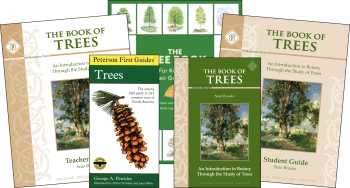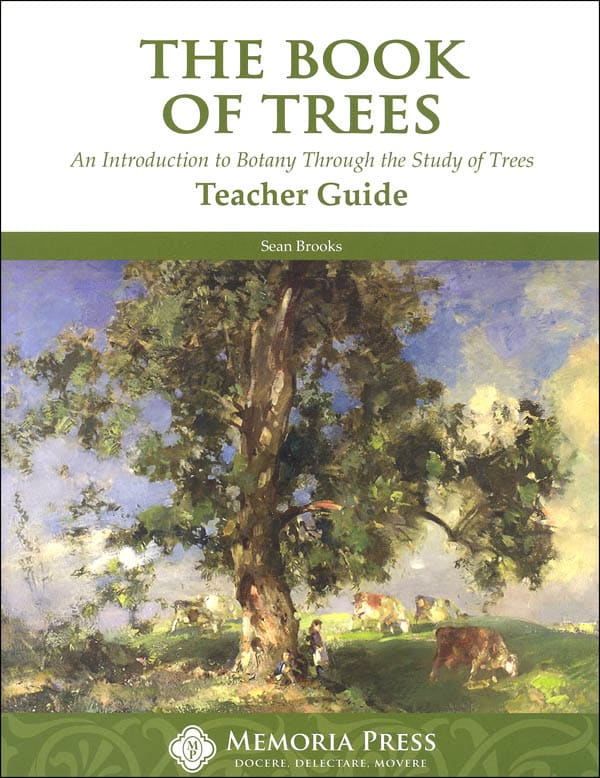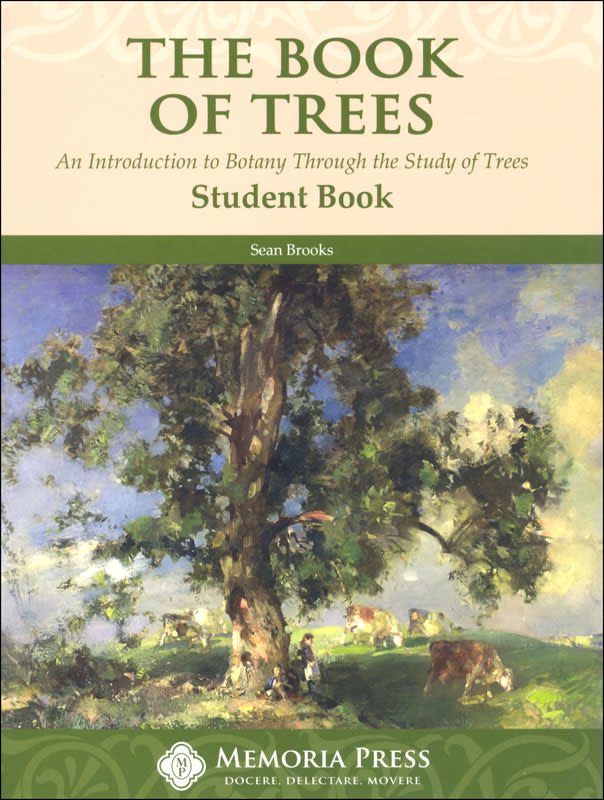The Book of Trees is an introductory botany course for students in sixth grade and above. It might serve as a full-year science course for younger students, but I think it is probably equivalent to one semester for high school students. High school students would need to complete almost all of the activities for it to qualify as a lab course.
The course has five essential components: The Book of Trees reader, The Book of Trees student workbook, The Book of Trees teacher guide, Peterson First Guide to Trees, and Tree Book for Kids and Their Grown-ups. You can purchase the course as a set or as individual books.
The teacher guide has the same 106 pages as does the student book, but with answers overprinted. The teacher guide adds a quiz for each lesson, unit tests, and answer keys.
The course is divided into five units: The Root and Stem, Leaves, Photosynthesis and Respiration, Flowers and Fruits, and Observing Trees. Fifteen lessons within the five units all follow a standard format.
Students are given a reading assignment from The Book of Trees reader. Chapters in the reader reflect the topics in the workbook, so students read the entire 80-page reader as they progress through the course. The reader includes a number of discussions that bring in chemistry: leaf transpiration, photosynthesis, the chemical makeup of simple sugars and starches, and fermentation. Although presented at a beginner’s level, there’s a significant amount of chemistry education involved in the second and third units.
After students read the assigned pages in the reader, they answer questions in their workbook based on that reading. Next are diagrams to label in their workbook. Beneath the diagram in each lesson are from one to three activities. Most of these are hands-on activities, field observations, and experiments but there are a few others such as conducting a survey and balancing a chemical equation. The teacher should select which activities to require depending upon the age and ability of each student. Quizzes should be completed following each lesson and unit tests at the end of each unit.
Once students have learned about the form and function of tree systems, they are ready to observe trees. Lesson 20 introduces the idea with a final assignment from the reader. The workbook then has 15 sets of three-page tree observation forms. Students will use Peterson First Guide to Trees and Tree Book for Kids and Their Grown-ups as they work on each tree observation. They will write down the tree’s structure and location and describe the tree’s bark, leaves, flowers, and fruit prompted by questions on the worksheets. They will determine the name of the tree with help from the reference guides then complete additional tree information gleaned from the guides. Next, they sketch a leaf, flower, and fruit from the tree if possible. Students will continue working on their tree identifications until they have completed fifteen (or whatever number the teacher requires.)
In addition to the tree observations, some of the lesson activities require students to investigate plants and trees in their natural habitats. Clearly, this relies on the time of year for plants and flowers to be in bloom. While students can substitute pictures of flowers or leaves from other sources, it certainly detracts from the course to do so. If you live in a climate with drastic seasonal changes, you need to plan accordingly. Don’t shortcut the activities and tree observations since these are likely to be the most interesting parts of the course for students.












